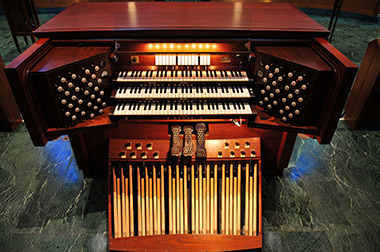Don't Ditch the Organ
 Harold Best was for many years the dean of the Conservatory of Music at Wheaton College. Every pastor and worship leader, of all musical persuasions and contextual hues, would do well to read these two paragraphs from him about the organ.
Harold Best was for many years the dean of the Conservatory of Music at Wheaton College. Every pastor and worship leader, of all musical persuasions and contextual hues, would do well to read these two paragraphs from him about the organ.
This is as good a place as any to bring up the subject of keyboard instruments, especially organs. I would contend that organ playing is indispensable to hearty congregational song, despite the thoughtlessness with which the validity of this instrument is questioned as part of outmoded traditions and listening habits. Before going further, I want to be the first to acknowledge that the organ has been misused by being overused by zealous, solo-minded performers. I would also acknowledge that the organ world has often sired a kind of snobbery that has impeded the concept of church music as humble service. Finally, I acknowledge that for many, the organ has turned out to be a mystically overpowering idol. More than the legendary king of instruments, it has often been seen as the king of kings, with may organists choosing their church jobs on the basis of the quality of the organ rather than on the call of God to quiet, meek service.
Even so, the baby should not thrown out with the bathwater. Let me say why. The very basis of the design of even the most modest organs flows directly out of natural, God-given laws found in the overtone series. I want to avoid the massive technicalities of physics and acoustics, so let me say it this way: Without any doubt, the organ is the most naturally supportive instrument for singing that Western culture knows of. Its very design and its intelligent use in hymn singing are meant to accomplish one purpose: to support singing by the intelligent use of registers chosen to fill in the cracks–to provide both an underpinning and a blossom to the work of the congregational voices. The result is s synergy: the whole greater than the sum of the parts. People are moved to heartier song without being overpowered or displaced, and their natural untrained voices are significantly validated and enhanced. True, there are those times when the organ soars above and beyond its normal collaborative task in the provision of free accompaniments and occasional iterations of brilliance and dash. But in the hands of a good organist, these should be reserved for those momentary or seasonal and festive times when clear hymnic water is turned into the polyphonies of rich wine. An organ does not have to be gargantuan to accomplish these tasks—not when it is well designed and properly played. (Exploring the Worship Spectrum: 6 Views, 73)



